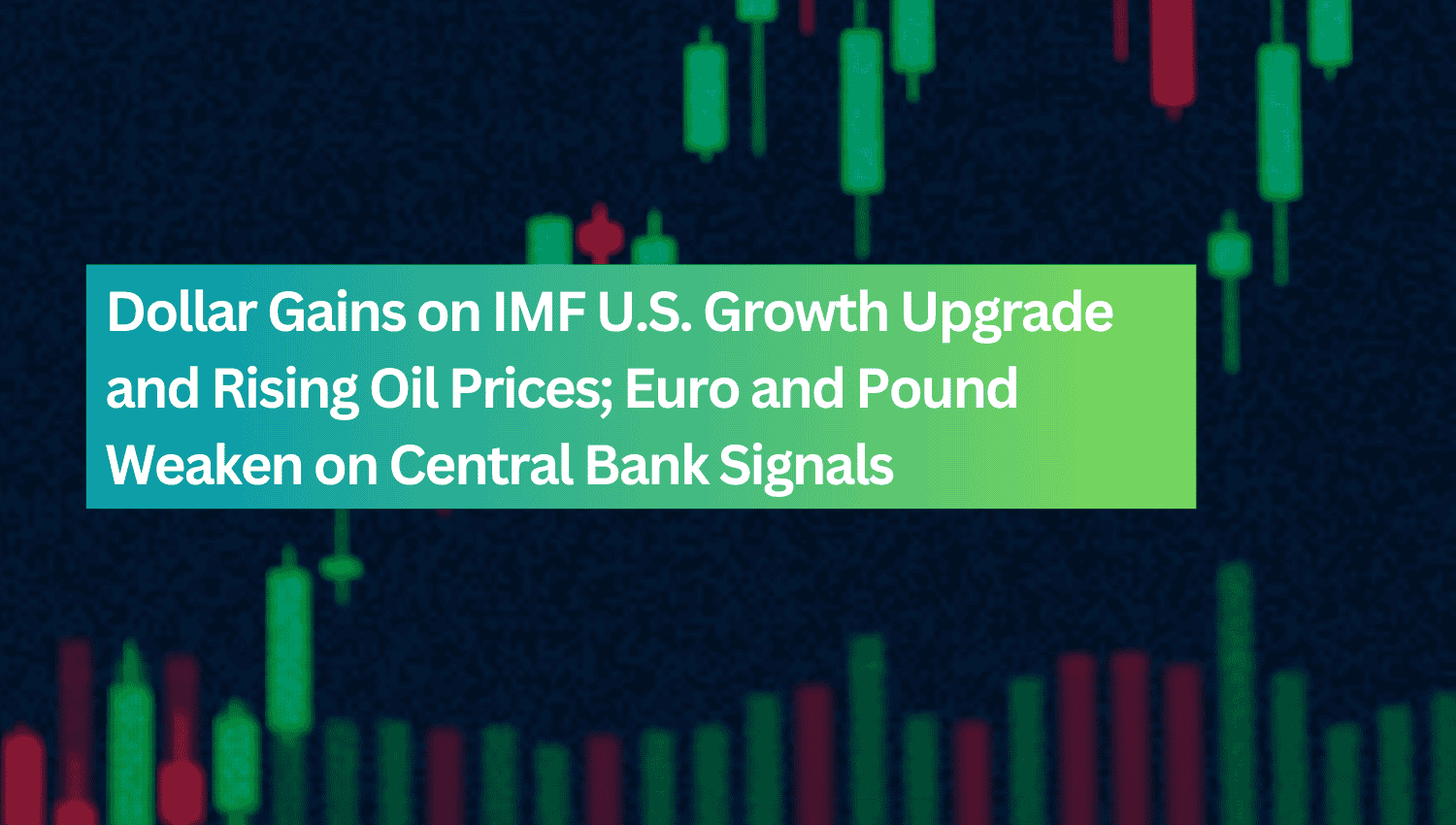Macro Outlook

Dollar Strengthens Ahead of U.S. Election on Rising Yields
The U.S. dollar surged on Monday, climbing 0.5%, driven by rising Treasury yields and investor optimism ahead of the November 5 presidential election. Comments from Dallas Federal Reserve Bank President Lorie Logan reinforced the dollar’s bullish momentum, as she expressed support for gradual rate cuts and continued balance sheet reduction. This stance pushed expectations of higher U.S. yields, helping the dollar index break above its 200-day moving average for the first time since August.
U.S. Economic Data Fails to Derail Dollar's Strength
Despite concerns about economic softness, the U.S. leading index fell by 0.5% in September, a sharper decline than the expected 0.3%. However, the data did little to dampen the dollar’s upward trajectory, as stronger Treasury yields remained the dominant driver of market sentiment.
Euro Struggles Amid Weak German Data and Dovish ECB Signals
In the eurozone, disappointing economic data added pressure to the euro, with Germany’s Producer Price Index (PPI) showing a greater-than-expected decline. Comments from Slovak central bank chief Peter Kazimir suggesting inflation may return to target in 2024 further contributed to the euro’s weakness. Traders are now turning their attention to European Central Bank (ECB) President Christine Lagarde’s scheduled interview on Tuesday, hoping for clearer guidance on the ECB’s monetary policy outlook.
Rising U.S. Yields Pressure Global Markets, Commodities React
Treasury yields increased by 7-10 basis points, with the 10-year yield nearing its highest level since July, reflecting market expectations of gradual monetary tightening. The widening spread between 2-year and 10-year bonds suggested cautious optimism regarding the U.S. economy, even as softer data emerged. Equity markets came under pressure, with the S&P 500 falling 0.38% ahead of key corporate earnings reports.
In commodities, oil prices jumped nearly 2% amid concerns about potential supply disruptions from the Middle East. Gold, initially rising on safe-haven demand, ended flat as higher U.S. yields capped its gains. Meanwhile, copper slipped 0.56%, reflecting the stronger dollar's impact on industrial metals.
Currency Markets: Dollar Dominates as Euro and Pound Slide
The dollar’s strength was broadly felt across major currency pairs. EUR/USD dropped 0.48% as the euro weakened on dovish ECB signals and weak German PPI data. USD/JPY surged 0.83%, reflecting the yen's vulnerability amid rising U.S. yields and mixed risk sentiment. The British pound fell 0.48% against the dollar, pressured by comments from Bank of England rate-setter Megan Greene, who emphasized a cautious approach to rate cuts. The Australian dollar posted the sharpest decline among G10 currencies, falling 0.70%, weighed down by concerns over China’s economic outlook and dollar strength. Cross-currency pairs like EUR/JPY and GBP/JPY saw modest gains as the yen weakened, while AUD/JPY experienced slight movement as commodity-linked currencies continued to struggle.
Outlook: Dollar Likely to Stay Strong, Euro and Pound Under Pressure
Looking ahead, the U.S. dollar is expected to maintain its upward trajectory, especially if Treasury yields remain elevated and economic data supports a cautious approach from the Federal Reserve. Investors will closely monitor U.S. corporate earnings and geopolitical developments for potential shifts in risk sentiment. The euro may face continued pressure as traders focus on eurozone inflation data and potential dovish signals from ECB President Lagarde’s interview. The British pound could remain under pressure if the Bank of England signals a cautious approach to future rate cuts. The Australian dollar is likely to struggle unless there is a significant improvement in China’s economic outlook or a reversal in dollar momentum. Overall, the dollar remains poised for further gains, driven by bullish sentiment and rising U.S. yields, while other major currencies continue to face downside risks amid economic uncertainty and geopolitical tensions.

